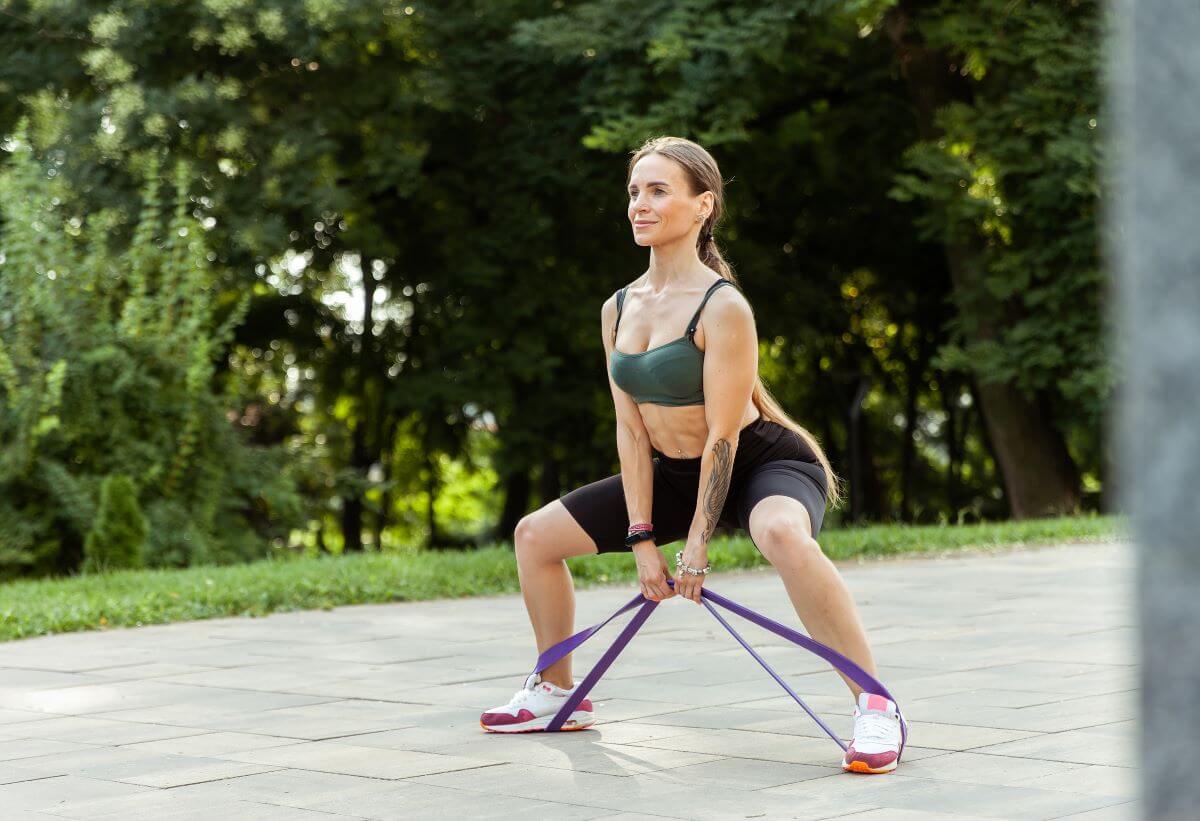The resistance band deadlift is an exercise used to target the posterior chain muscles of the body. This includes your hamstrings, glutes, back, and calves.
Unlike most other resistance band exercises, the banded deadlift is best performed with a band that does not have handles.
To set up for the deadlift, you will place the band on the floor, step onto it with the desired stance, hinge to grab the loops of the band, and perform the exercise.
Resistance band deadlifts can be included in full body workouts, lower body workouts, pull workouts, or leg workouts.
In this article, we will discuss 3 different deadlift variations you can perform with resistance bands.
1. Conventional Resistance Band Deadlift
The conventional resistance band deadlift is the variation that will target the posterior chain evenly and also indirectly hit the quads as the loops are held at the side of your body.
- Place the band on the ground.
- Step onto the band with a shoulder width stance.
- Hinge at the hips and grab the loops of the resistance band.
- Brace your core and keep a flat back as you rise into the starting position.
- Drop your hips and pull the resistance band while driving your feet into the ground.
- Once you have reached a standing position, reverse the movement by driving your hips back and lowering your body back to the starting position.
- Repeat for the desired number of repetitions.
2. Romanian Banded Deadlift
The Romanian banded deadlift is a deadlift variation that will place more emphasis on the hamstrings and glutes.
- Place the band on the ground.
- Step onto the band with a shoulder width stance.
- Hinge at the hips and grab the loops of the resistance band.
- Brace your core and keep a flat back as you rise into the starting position.
- Drop your hips and pull the resistance band while driving your feet into the ground.
- Once you have reached a standing position, reverse the movement by focusing on driving your hips back and visualizing touching your butt towards the wall behind you.
- Slowly reverse the movement to the starting position focusing on placing the emphasis on your glutes and hamstrings.
- Repeat for the desired number of repetitions.
3. Sumo Banded Deadlift
The resistance band sumo deadlift is a deadlift variation that will mimic the sumo deadlift and target more quads than the posterior chain. That said, you will still get a degree of resistance in your hamstrings, glutes, and calves.
- Place the band on the ground.
- Step onto the band with a wide stance, looping the band around your feet.
- Hinge at the hips and grab the middle of the resistance band.
- Brace your core and keep a proud chest and flat back as you rise into the starting position.
- Drop your hips and pull the resistance band while driving your feet into the ground.
- Once you have reached a standing position, reverse the movement by focusing on driving your hips back and lowering your body back to the starting position.
- Repeat for the desired number of repetitions.
Conclusion
The banded deadlift is an exercise that can be incorporated into your resistance band workouts. They can be a helpful hip hinge variation for those who work out at home with resistance bands.
A general recommendation would be to perform 3-5 sets of 8-12 repetitions.
You can make the exercise more challenging by increasing the thickness of the band you select or by increasing the reps/sets you perform during your workouts. Additionally, you can progress with the exercise by changing the equipment you use. For instance, you can make it more challenging by switching to dumbbells, kettlebells, and/or dumbbells.
If you have any questions about the three deadlift variations discussed in the article, please leave a comment below!
